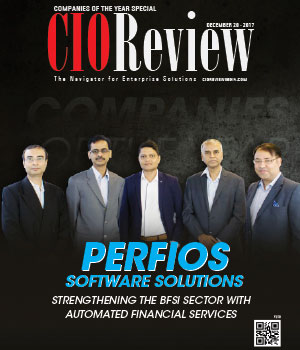
Manage Inactive Servers Remotely with KVM over IP
Sanjay Motwani, Regional Director- Asia Pacific, Raritan APAC
 As data needs grow, so does the need for data centers. A whitepaper by the Internet and Mobile Association of India released in May 2016 estimates that India can grow to an infrastructure hub attracting USD 7 billion or 4.5 percent of the world’s investments by 2020.
As data needs grow, so does the need for data centers. A whitepaper by the Internet and Mobile Association of India released in May 2016 estimates that India can grow to an infrastructure hub attracting USD 7 billion or 4.5 percent of the world’s investments by 2020.
The rapid pace of change in both the available data and business requirements puts immense pressure on data center managers to be more agile. The servers are expected to do more than ever: protect huge volumes of data and the rising number of mission-critical applications, manage highly complex environments and meet more challenging service level agreements (SLAs). In this era of Big Data, it is imperative that the manager is able to use the allocated infrastructure dynamically. But, IT managers encounter a host of problems when it comes to managing servers remotely.
Problems faced by IT managers in managing servers remotely
Hardware: Organizations lose millions of dollars by the minute due to downtime and data loss. The two major prerequisites for a remote server are continuous power supply and reliable internet connectivity. Any disruption to the network will prevent remote server management. Besides that, excessive heat can destroy data on hard drives and cause logic circuits to behave erratically and fail. Restrictions in cooling, hardware management and infrastructure optimization are other challenges.
Software: Remote management tools don’t highlight every detail about every server and when they do reveal a problem, it doesn’t mean they can actually fix it. Earlier, data centers worked in silos. Today, with the advent of Cloud, governance and control has become a big challenge. Although remote access software is simple to load, software based solutions have some downsides which cannot be ignored:
• Software must be installed on every computer to be accessed and it will compete for system resources against critical applications.
• Requires a target computer OS and production network to run; which is virtually impossible in an emergency situation.
• If the operating system crashes on the remote computer, the alternative way to activate the remote computer is physically rebooting the remote server.
• There are some huge security risks that by some accounts are responsible for nearly 62 percent of breaches
One problem, many solutions
It is essential for IT managers to perform management testing and proof-of-principal projects before rolling out remote management platforms to distant data centers. The IT staff needs to be trained for any eventuality and understand the limitations of the platform. In order to keep running the servers constantly, there is a need to ensure that there is enough supply of back-up power. Consider alternative power sources such as diesel-powered generators, local cogeneration facilities such as solar or wind farms or an array of methane-powered fuel cells. Redundant Internet connections are common and practical for remote data centers.
Why KVM over IP is the best
While remote management tools like VNC and pcAnywhere will help perform management and diagnostic tasks they still cannot quite match some of the in-depth features of KVM solutions.
Advantages of using KVM over IP:
• It provides a single interface to access and control power to all rack-mount equipment
• It is dependable- does not use the servers own network connection or rely on software agents
• Allows heterogeneous access to servers from multiple vendors. Gives the same console experience regardless of the vendor
• Operates independent of the target computer
• Many enterprise KVM switches support upwards of 64 servers, and can be configured to work through a centralized server management solution, thus greatly negating the cost factor of KVM switches
• IP-enabled KVM switches and serial console servers give data center managers and administrators the equivalent of “at the rack” BIOS-level access to thousands of servers and other devices anytime and anywhere
• It can easily switch views between servers, network switches and data storage equipment
• It can set and receive alarms for temperature, humidity, and power usage limits
• It can create power usages reports for data centers, rack, cabinets and equipment
To sum up, the need for real-time information and online connectivity is probably at its greatest now than it has been over the past several years. As organizations expand their networks across the globe, there is a critical market need for the next-generation KVM over IP solution. A secure IP-based KVM management strategy should guarantee simple, non-invasive, flexible, fault-tolerant, scalable and cost-effective access from anywhere, at any time.
CIO Viewpoint
Why Foolproof Facial Recognition Is Key Against...
By Joseph Sudheer Thumma, Global CEO & MD, Magellanic Cloud
National Technology Day 2025: Powering Progress...
By CIOTech Outlook Team
Aligning IT Roadmap with Business Objectives: A...
By Subhash singh Punjabi, CISO & Head Enterprise Architecture, Deepak Fertilisers & Petrochemicals Corporation Ltd
CXO Insights
By DR. Makarand Sawant, Senior General Manager IT, Deepak Fertilizers and Petrochemicals Corporation Limited
The State Of Customized Lending
By Sean Hunter, Chief Information Officer at OakNorth
10 Common Types Of Malware And How To Combat...












